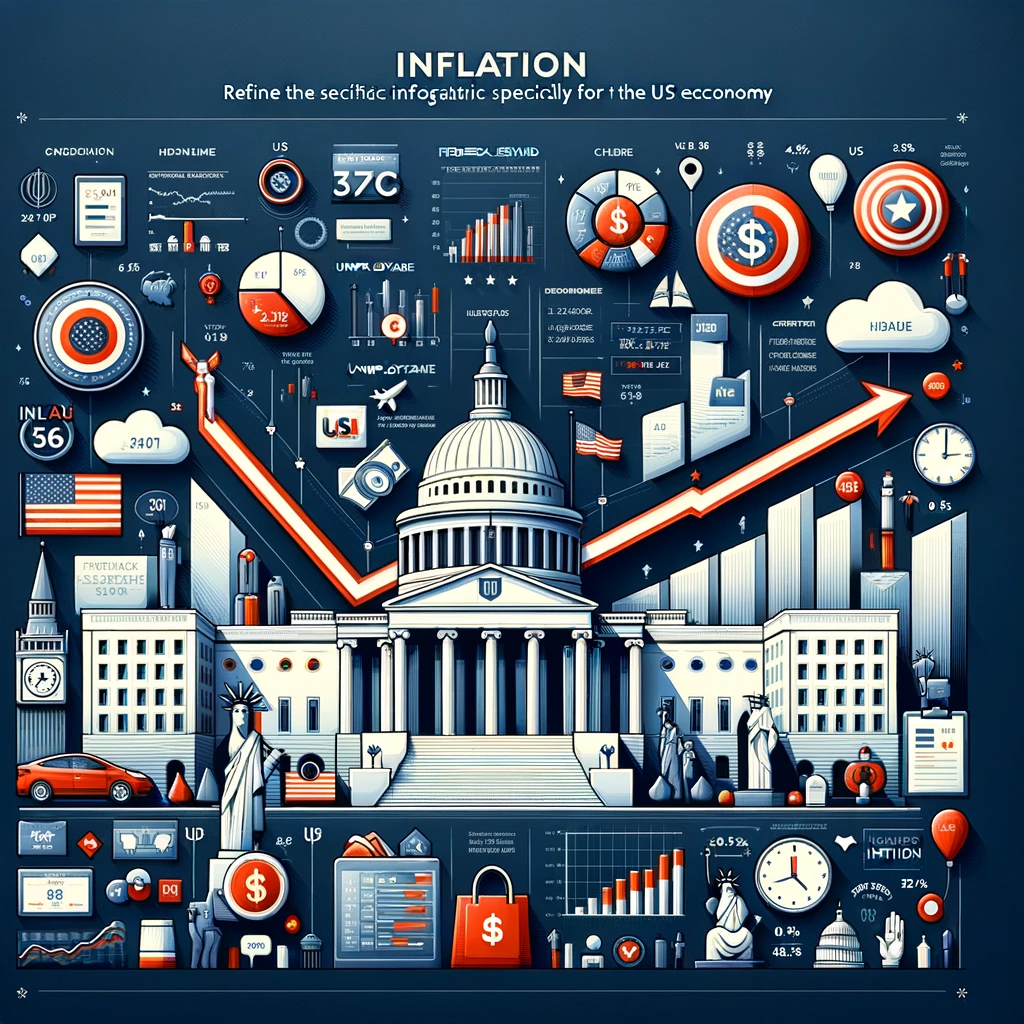Navigating the Volatile Terrain of US Inflation: Trends and Expectations
2023-04-03

U.S. Consumer Price Index (CPI) Shows Initial Peak in 2022, Followed by Subsequent Decline in 2023, Signaling High but Easing Inflation
The latest data on the Consumer Price Index (CPI) for All Urban Consumers All Items in U.S. City Average has displayed some noteworthy trends. In particular, we observed a peak year-over-year change of 9.0% in Jun 2022, followed by a gradual decline to 6.1% in Feb 2023. These figures signal a decrease in the rate of inflation from the peak observed mid-way through 2022. When compared to longer-term averages, the CPI's rate of change for 2022 stood out remarkably, reaching 8.0% on average. However, in 2023, we've noted a decline down to 6.4%. This signifies that inflation, while still relatively high compared to previous years, has started to taper off. The sustained high inflation rates can have various implications, including reduced purchasing power for consumers, potential interest rate adjustments by central banks, and impacts on investment and retirement savings. It's important to continue monitoring these trends to understand the potential long-term effects on the economy and personal finances.
Significant Fluctuations in Sticky Price Consumer Price Index (CPI) Reflect Volatile Inflation Landscape and Implications for U.S. Economy
The latest monthly data on the Sticky Price Consumer Price Index (CPI) shows a significant fluctuation in inflation trends. In March 2022, the year-over-year change stood at 172.1%, marking a substantial increase from the previous year. However, this surge was short-lived as the index dropped to 53.4% by February 2023. The average year-over-year changes in previous years provide crucial context, with a notable spike in 2022 at 130.2%. This stark deviation from the relatively lower averages of 2018 and 2019, and the negative change in 2020, indicates a volatile inflation landscape. These fluctuations may have significant implications for U.S. inflation. The rapid decrease from 172.1% in March 2022 to 53.4% in February 2023 signals a potential stabilization, but the overall high levels compared to previous years suggest persistent inflationary pressures. The abrupt changes indicate a rapidly shifting economic environment, potentially influencing consumer behavior, investment decisions, and monetary policy considerations. The Sticky Price CPI, focused on goods and services with infrequent price adjustments, serves as an essential gauge for future inflation expectations. The substantial swings in the index emphasize the challenge of accurately predicting inflation and its impact on economic stability. Policymakers and businesses should closely monitor these developments to adapt effectively to the evolving inflation landscape.
Declining Trend in Inflation Expectations Revealed in University of Michigan's Surveys of Consumers
The University of Michigan's Surveys of Consumers provide key insights into inflation expectations, and the latest data shows a notable trend. In March 2023, the median expected price change over the next 12 months stood at 3.6%, down from 4.1% in February 2023, marking a significant deviation from the previous trend of moderate declination. The decreasing trend in inflation expectations started in December 2022 when the rate was 4.4% and continued to drop to 3.9% in January 2023. The trend then briefly reversed in February before dropping again in March. This decline in inflation expectations may imply a shift in consumer sentiment regarding future price levels, reflecting a potential adjustment to the high inflation environment witnessed in recent years. It’s important to note that lower inflation expectations could have broader economic implications, affecting consumer spending behavior, wage negotiations, and monetary policy decisions. This downward movement may suggest growing confidence in the central bank's ability to manage inflation, but continued monitoring is essential to assess the persistence and impact of this evolving trend.
February 2024 Breakeven Inflation Rates: 5-Year, 10-Year, and 30-Year Treasury Yields
The latest monthly data on the Breakeven Inflation Rate, sourced from the Federal Reserve Bank of St. Louis, reveals the following figures for February 2024: the 5-Year breakeven inflation rate stands at 2.35%, the 10-Year at 2.3%, and the 30-Year at 2.26%. These rates represent the market's expectation of future inflation, as inferred from the difference in yields between Treasury Constant Maturity Securities and Treasury Inflation-Indexed Constant Maturity Securities. The relatively higher breakeven inflation rate for the 5-Year period compared to the 10-Year and 30-Year suggests a near-to-medium-term inflation expectation that is marginally higher than the longer-term outlook. It's crucial to monitor these figures closely as they serve as indicators of market sentiment and impact investment decisions, monetary policy, and overall economic outlook.
Federal Reserve Bank of Cleveland: Expected Inflation Rates Increase Across All Measured Time Horizons in March 2023
The latest monthly data on expected inflation, as provided by the Federal Reserve Bank of Cleveland, reveals an increase across all measured time horizons. The expected inflation rates for March 2023 stand at 2.07% for the 1-year horizon, 2.2% for the 2-year horizon, 2.22% for the 5-year horizon, and 2.26% for the 10-year horizon. This upward trend in expected inflation rates suggests a growing anticipation of higher future inflation levels among market participants and economic agents. It could signal changing expectations regarding macroeconomic factors such as monetary policy, fiscal dynamics, or supply chain disruptions, all of which may influence the future path of inflation. As such, monitoring these indicators becomes crucial for businesses, policymakers, and investors to make informed decisions in an environment of evolving inflation expectations.
